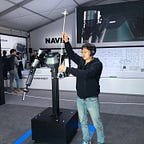Best way to design motor driver circuit. Part1 : Current sensor (Hall sensor vs shunt resistor)
Motor control starts with perfect current control.
Numerous ways to measure the motor current are existing and each method has pros and cons. Because all engineering has cost limitations, it is necessary to grasp the characteristics of each method before choosing the suitable components for your circuit.
Since the electric motor is driven by the force of the magnetic field created by the current, any kind of motor or any type of control method requires current control. A long time ago, the current was controlled without measuring the current (open-loop control ) in such a way that the corresponding voltage was applied to induce a specific level of current. However, for more stable control with robustness, the error based closed loop control (eg PID control) was introduced, and the importance of the precise current measurement has become increasing. The key to error-based control is to make the error zero. If the current measurement is wrong, the current cannot converges to the desired value.
Two main ways to change the current value into voltage are using series resistor and using hall effect based current sensor.
In a digital based controller using an MCU, the current information is measured by the form of a voltage. There are two main ways to change the current value into voltage. The first method is using Hall effect, and the second is using Ohm’s law.
Hall effect is a phenomenon in which a potential difference is generated when a magnetic field is applied around the moving electrons. When the magnetic motive force is applied, the moving electrons are collected at the one of each side. The electric potential difference from the collected electrons is proportional to the current, so it can be interpreted as a current information.
The advantage of this method is that electrical isolation is made between the current flowing path and the output voltage. So, it is possible to derive the current information without switching noise (from PWM). Also, due to the isolation, sensing devices can be selected regardless of the level of pole voltage. Is is also good for high voltage application. This is because the power ground of PWM is not detected and only current information is used at the two points in the power path.
The disadvantages of this method are also caused by the principle of the Hall effect. There is a delay because a constant charge must be accumulated to convert the current into a voltage. In a closed loop based current control system, delay is a factor that reduces the stability of the system or limits bandwidth. This approach also implies a hysteresis problem in the relationship between current and magnetic fields, which results in the system having non-linearity. Voltage should be subtracted from the current either from the linear area or from the table, which would require additional cost.
Next current measurement method uses series resistor to convert current information into voltage. According to Ohm’s law, voltage corresponds to the product of current and resistance. This method has the advantage of being inexpensive and simple because current can be measured by simple resistor without any special device. In addition, unlike the hall effect based measurement method, the voltage has a linear relationship with the current, so that the current value is easily derived from the measurement voltage value, and the voltage is instantaneously generated without a delay.
There are four points in which resistances can be inserted for current measurement in the three phase two level inverter based motor drive circuit as shown above. Among them, high side dc-link sensing and low-side dc-link sensing are points for detecting short circuit accident, and points needed for motor control are in-line phase current sensing points and low-side phase current sensing points.
In order to understand the pros and cons of both methods, you need to know the principle of three phase two level interver first. The AC motor, which is 3 phase motor, is connected to the inverter which consists of 6 switches with three points A, B, and C. The potential of each motor phase point (A, B, C) is determined by two switches connected to each point. It becomes Vsupply when the upper switch is on, and it becomes GND when the lower switch is on. (A Short circuit accident occurs when both switches are on simultaneously, so they operate complimentary.
In-line phase current sensing is most accurate as the motor current is directly measured. However, the voltage rating should be taken into account when selecting the sensing op-amp as A, B, and C points may rise to V supply if they are not insulated. In case of low side current sensing method, because voltage insulation or voltage rating of op-amp is not necessarily taken into account, it is possible to use op-amp at a relatively low price. However, if the low side switch is switched off, no current is flowing in the resistance. Therefore, the current can only be measured at the specific instant, so that there are constraints on the algorithm to improve the performance of various controls, such as double sampling scheme.
